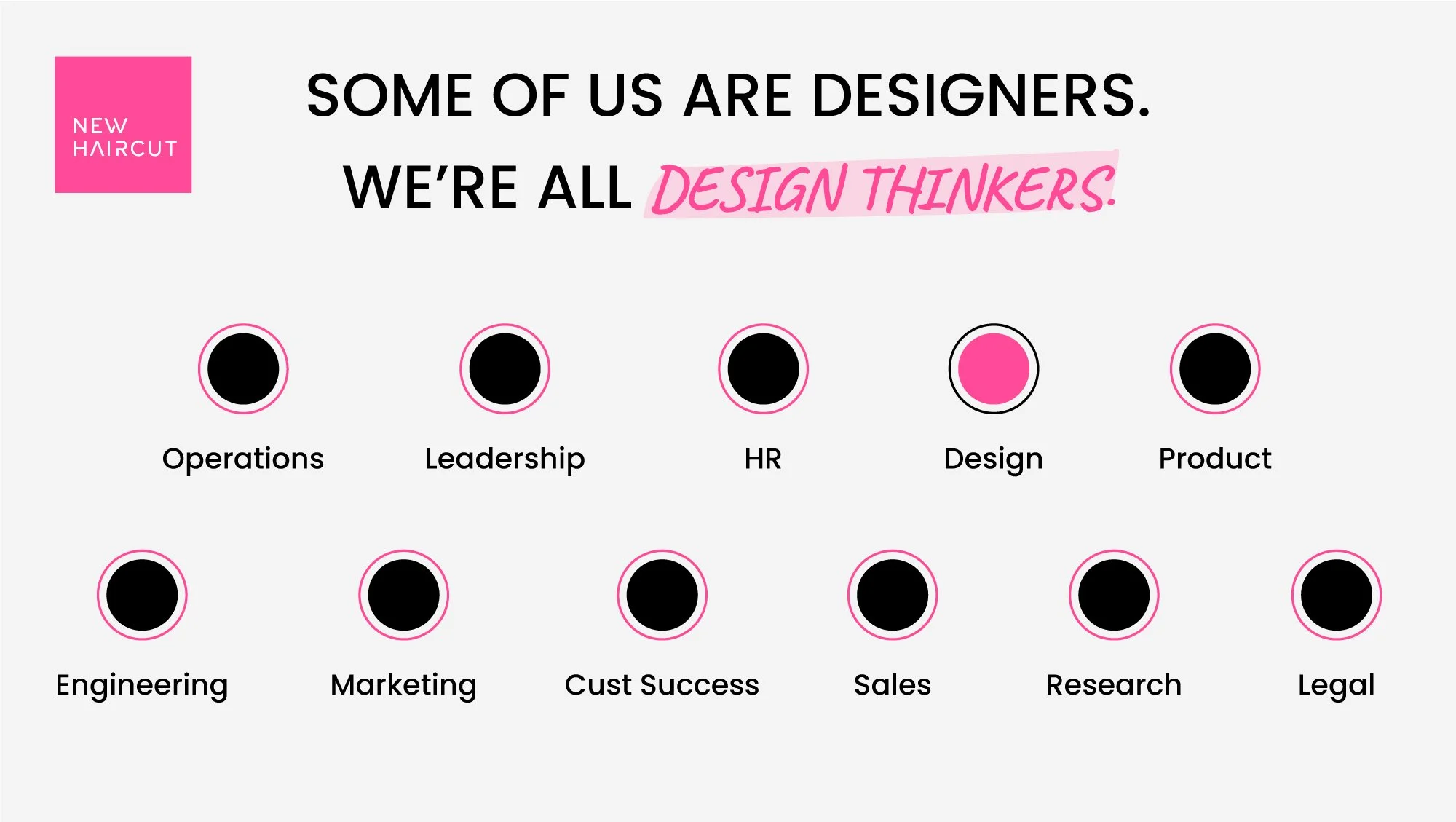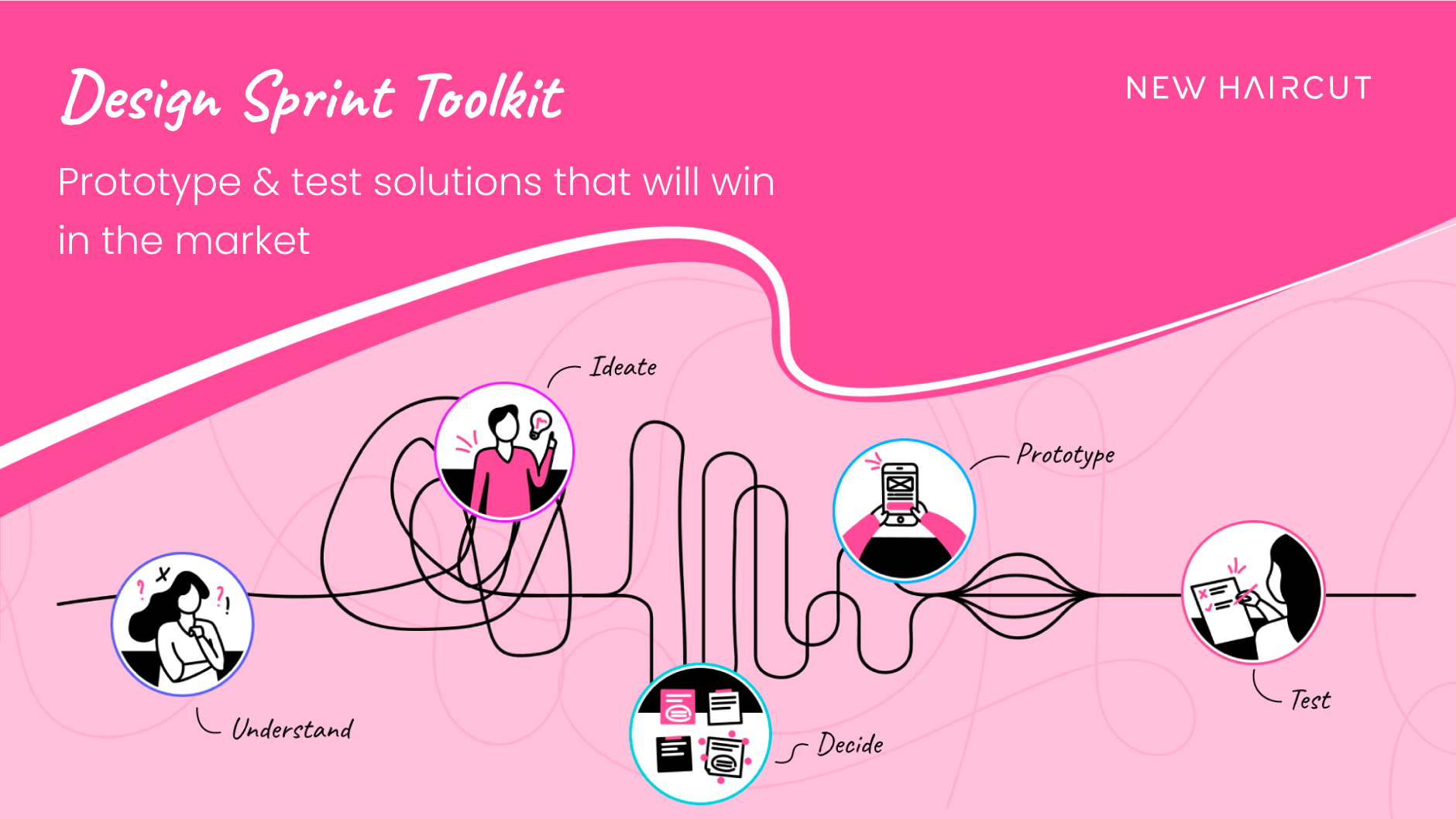It’s OK to like design thinking
The most important lesson I’ve learned about design thinking that’s helped me appreciate its real value.
Disheartened design
After 10 minutes of polite conversation, Maria dug into the crux of what she hoping to discuss…
“To be honest, the biggest pushback I’m facing to improve our UX process is coming from the design team!”
Maria paused on the other end of the phone, sighed, and finished her thought…
“I thought, of all groups, the other designers would be more open to design thinking.”
Maria is a Sr. UX Director at a large marketing software company. She’s been there 18 months, originally joining with the intent of initiating a new design-driven philosophy across the company. But in the last several months, she’s become deflated by the organization’s unwillingness to change — primarily from colleagues within design who pre-date her arrival.
After reading some of the ideas expressed in this publication, she reached out to exchange notes and, maybe, become re-inspired. As humbled as I am by that, I always find conversations like this ironic, given I’ve never held a formal design position. But even more ironic how deep our conversation went.
Truth is, this was hardly the first time I’d spoken with someone wanting to spark change through design thinking but being stonewalled by existing design aristocracy.
I’ve similarly had plenty of awkward but otherwise interesting conversations with design laureates — you know, those folks that say things like, “I was doing UX before it was called UX!” Oh, boy.
You can also read countless articles that spout venom for design thinking — certainly design sprints. I caught the following quote recently, featured in an article written by an author that self-identifies as a Design Criticism Expert (apparently that’s a real thing):
“The rise of IDEO and the popularity of ‘design thinking’ as a business strategy has tended to conflate what used to be a specific craft skill to the level of vague and generalized management theory.”
As much as I understand, but disagree, with everything this author expressed, it helped me gather my thoughts.
Of all the resistance I’ve run into regarding design thinking — personally or from others who have shared similar stories — 2 high-level themes emerge. If I was workshopping this with sticky notes (now I’m pushing it!) I would have 2 clusters:
Fear
Platform
Fear of design thinking
A wise man once told me that our actions are driven by 2 fundamental forces: fear and love.
I’ve not met a single designer over the years that doesn’t love design in its purest sense. Likewise, designers have fought exceptionally long and hard to earn their seat at the table. And it’s paying off, as designers now rightfully occupy C-level positions at many of the most progressive companies.
And now here comes along this notion that, through design-thinking-powered design transformation, everyone will be a designer!
If I were a designer, I would take that to mean that everything I’ve worked so hard to build will be distributed to the masses. That my design systems will be changed based on the whims of anyone who knows how to fumble through a journey map. And that I’ll be designing products and services based on design sprint doodles, storyboards, and prototypes. No wonder there’s been so much foot stomping. 🤬🤬🤬
But here’s the most important lesson I’ve learned about design thinking that I hope designers will consider — design thinking was actually created for the rest of us; i.e. it helps to establish the platform that makes it possible for designers to thrive at their craft.
Design thinking creates the platform
I’ve always been very familiar with the concept of Design (Product) Ping Pong. But only recently have I made the connection about design thinking’s most important contribution — it’s not the research or prototypes, but the common language it provides for designers and non-designers to co-create together, without stepping on each other’s toes (as much).
Design thinking is 1 approach (of many) that makes it safe for non-designers to understand, appreciate, and contribute to the design process so that designers can put their specific craft skills to use without all of the overwhelming resistance and setbacks from everyone else.
This gelled for me when I listened to Suzanne Pellican talk about designing design at Intuit. She and others there worked for years to train everyone else on design principles, so that designers could eventually became empowered to do their core job in a supportive environment.
Design thinking for anyone
Design thinking created the platform to allow me, an engineer by trade, to not only fall in love with design, but make use of its mindset + methods for solving real, important business challenges.
It also allowed me to get over my fear of design imposter syndrome — I’m not claiming to be a designer, I’m just borrowing + remixing tools from a designer’s tool bag that work really well.
Likewise, I’ve spoken with so many non-designers trying to break into design thinking but who are worried that their research, engineering, product, etc (non-design) upbringing will hold them back. It won’t. More so, your perspective will benefit you as you bring others from your discipline into the practice.
The desire to bring design thinking into any organization has little to do with your ability to create interfaces. Instead, design thinking is initiated by people who are interested in taking advantage of its ability to improve trust, teamwork, accountability, performance, and conflict resolution. And sure, along the way you’re going to learn together some truly insightful things about the products and services you should and should not be creating.
At no point should we frame design thinking as a tool to democratize the critical role designers play in the grand scheme. And hopefully designers will begin to accept the tools, so that we can support their work.
In the end, it’s about developing an environment where we communicate and contribute to the products and services we create, on equal footing.
“Doing” design thinking
One of the most implementable and practical formats of design thinking is a design sprint. Now you can put design thinking to work for your organization with our Design Sprint Toolkit.
The toolkit includes all of our digital templates, presentation slides, pro tips, and dozens of sprint upgrades. Included are versions that support remote (virtual) or in-person sprints.
This toolkit is 100% comprehensive and ready-to-use, today.



